#so let's talk about Hong Lu while everyone else is talking about Heathcliff lol
Explore tagged Tumblr posts
Text
Let’s talk about Hong Lu’s poster
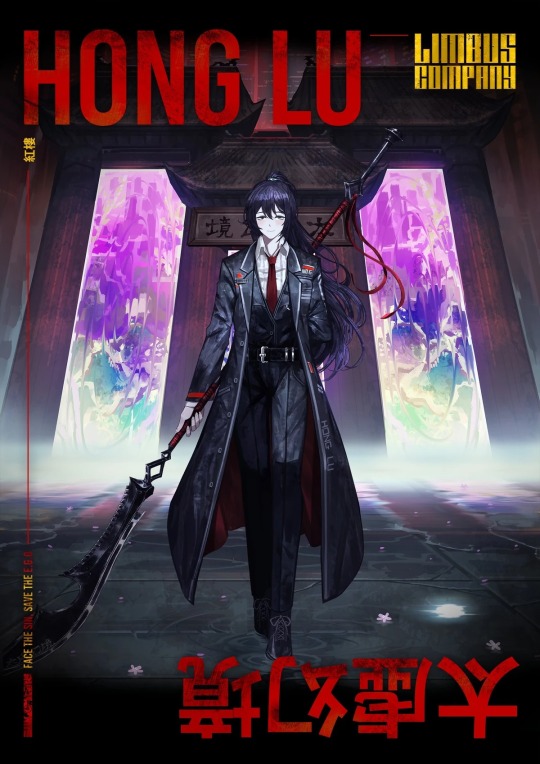
Summary:
Introduction
The paifang
Where is Hong Lu?
The reality of Hong Lu
{Skip the introduction if you’re only interested in the analysis of the character of Hong Lu and his poster}
I/ Introduction
Today I would like to offer you an analysis of Hong Lu's character poster. Although it is difficult to know what these character posters seek to show, apart from presenting characters, it is clear that each of them possesses clues about the sinners’ past and especially where the character represented comes from.
For example, we could see the pallid whale destroying the Pequod on Ishmael's poster, although it was easy to make the connection with Moby Dick, the poster also showed us that Ishmael had a history with a white whale and was a survivor of a shipwreck.
I am not sure if all the information is equally valuable according to the posters because, for example, Sinclair's poster is quite enigmatic and does not really show a specific event or place, or at least I do not recognize it.
But that does not stop me from believing that what is depicted behind the sinners is supposed to be related to the sinner, yes, but also, I think, related to a wing or place in the city that was important in the sinner's past.
I even wonder if the moment/place represented is not supposed to represent the place where the sinner decided to join the company.
Why do I say this? Well, you can see behind Rodion's character a casino setting, whereas her ego and space generated by the golden bough were affiliated with a world of ice. So why does Rodion's poster show her in front of an environment reminiscent of a casino? Perhaps it is to evoke her love for gambling as well as her ability to bluff and her desire for money, but if we look at Rodion's photo in the identity archive menu:

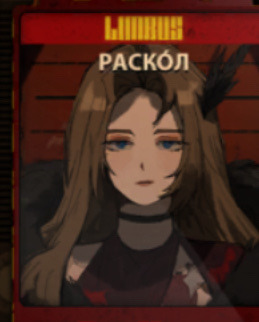
We can see Rodion in an outfit we have never seen her in before, an outfit that closely resembles what someone might wear at a casino. We have never seen how Rodion was recruited by Limbus Company, but if we follow the logic I just proposed, Rodion would have been recruited in a casino.
This logic seems credible and yet doubtful when we look at the case of Yi-sang.
For the moment, Yi-Sang is the only sinner whose recruitment by Limbus Company we know:
We know he was coming out of the laboratory where he was held by Gubo, the same laboratory we can see behind him on his poster.
But here's the catch: this is how Yi-sang was dressed when he met Faust VS versus what Yi-sang looks like on his photo in the identity archive:
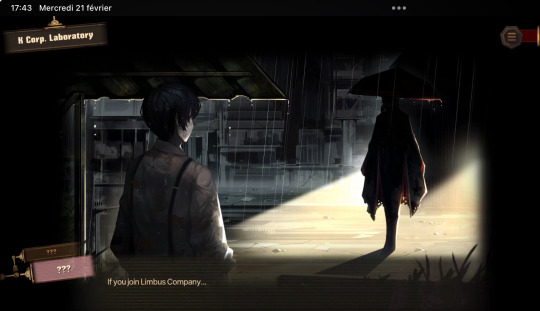
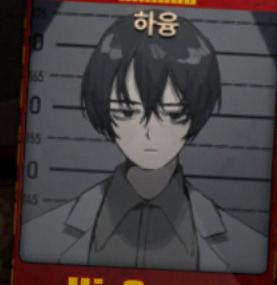
But hold on! I may have an explanation for this difference:
Yes, in the first image, Yi-Sang is not wearing his scientist coat, but he is indeed wearing the gray shirt, and I think Yi-Sang was indeed dressed with his coat initially, I think he just took it off in the left image.
So yes, it sounds like a lame excuse, but look at how Yi-Sang was dressed before this scene (when he was held captive).
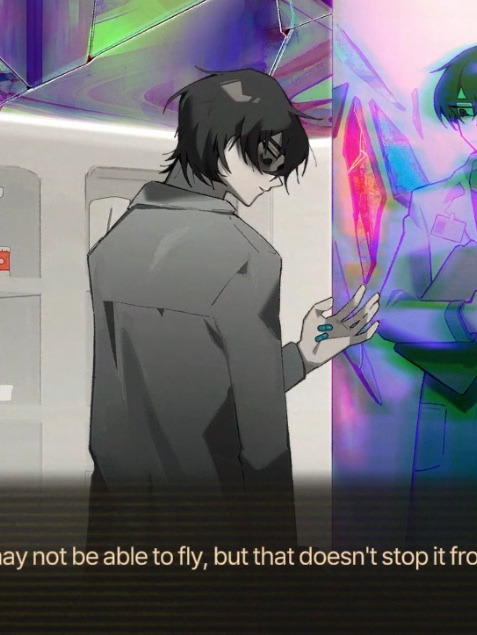
Boom, there it is, that scientist coat. Yi-Sang was indeed dressed as he was in that laboratory when his photo for the company was taken.
But here's the second little hiccup: we don't know how much time separates Yi-Sang's escape and his encounter with Faust...
But if what is depicted behind the sinners is not toward the place/moment where he was recruited by Limbus Company, then I think the place depicted behind the sinner is still a place/moment that shaped the sinner and convinced them to join Limbus Company.
II/ The Paifang
After this brief analysis that raised many questions, I would especially like us to keep the idea that what is depicted behind Hong Lu is related to him and the wing (or other place in the city) where he comes from.
Let's continue:
To make the understanding and analysis of the poster simpler, I decided to divide it into 6 zones:
Red: character
Dark blue: background area with tall buildings —> the city / what is behind the paifang
Purple: Paifang
Light blue: distorted and highly colorful area / portails
Orange: what surrounds the sides of the paifang
Green: the ground and what is in front of the paifang
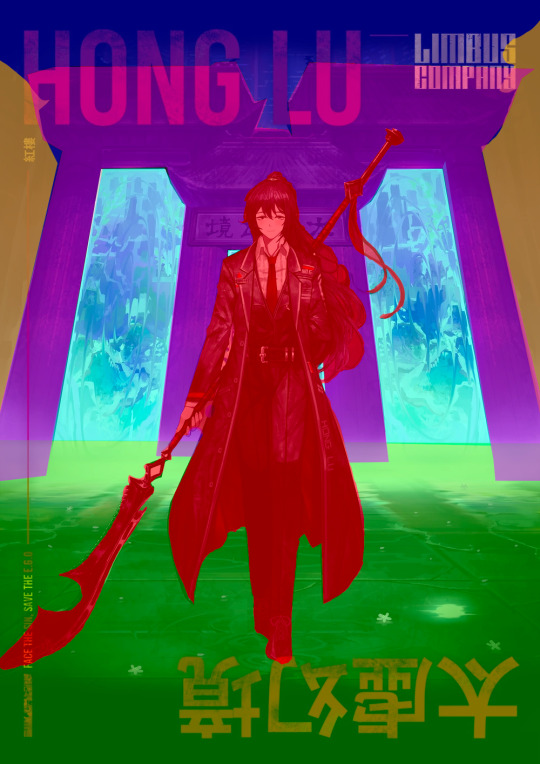
Even if sometimes I won't do it, I will now also use this color code to target specific areas of the poster when needed.
Well, first of all, I'm going to talk about the purple area, which is everything related to the Paifang, which is a very important element of this poster:
This Paifang, which looks like it's made of (red?) wood, seems to be surrounded by tall walls as we can see in the orange area.
So it seems that this Paifang is the only entrance and exit between two spaces. Indeed, if this Paifang is surrounded by walls and (assuming) they extend over a long distance, we can quickly conclude that this passage is the only one that could allow someone to enter or leave a closed space (we will come back to these ideas a little later).
Returning to the Paifang, it seems to perfectly fit the definition I found of a Paifang: "A Paifang is a traditional Chinese architectural structure in the form of a portico or arch, usually placed at the entrance of important places such as cities, temples, or properties. These symbolic gateways are often richly decorated and serve as monumental entry points."
I think the main idea to remember is that this Paifang is a gate/a means of passage, and I think it is the only gate allowing travel between the two spaces it separates.
But what does this gateway separate? Well, I think we have an answer with the inscription in the middle of this Paifang:

Indeed, what is written in the middle behind Hong Lu is this: 境幻虚太 (Jing Huan Xu Tai), we can recognize 4 distinct characters:
境: Realm
幻: Illusory
虚: Void
太: Great
But what is most surprising is that this phrase is actually written backward; indeed, in Chinese, it should be written 太虚幻境 (especially when we know what this combination means, especially in Dream of the Red Chamber), and here it is written as if it had been reflected in a mirror. We know that mirrors play a very important role in Limbus Company, but we will come back to this idea of a mirror a little later.
{Update : I was informed that the ordering of character written on the paifang is actually correct for traditional Chinese writing and for when the characters have to be placed horizontally (especially when you have to write on a space which does not really allow you to write in the vertical like on this paifan). The fact remains that the name of Hong Lu's weapon is therefore written in backward, so why? I don't really have an explanation now... and I have to admit that I still like my first analysis and I still think it is (a little) relevant in a way, so I invit you to keep reading (while keeping this in mind)}
For now, I would like to return to the meaning of what is written on this Paifang; indeed, once the combination of these 4 characters is reversed, it refers to a very important place in Dream of the Red Chamber: "Illusory Land of Great Void" or "Land of Illusion".
We can therefore conclude that this Paifang overlooks the "Land of Illusion" and separates/is the gateway between these two worlds, which are the "Land of Illusion" and, I think, the city.
Which is reminiscent of its “equivalent” in the novel since in the novel there is also a mention of a gate which separates the world of illusions from the rest or at least which indicates its entry point
{Side note: Strangely, this is not the only time that "太虚幻境" appears on the poster since it also appears just at the bottom right, and yes, "Land of Illusion" is also the name of Hong Lu's weapon, but that's not all! It is of course also the name of his EGO.
We can therefore see that the "Land of Illusion" is used to define many things related to or belonging to Hong Lu.}
In the novel Dream of the Red Chamber, The Land of Illusion is a domain where illusions and fantasies come to life. However, despite its enticing and enchanting appearance, this fictional world is also fraught with dangers and traps as it can lead individuals into deceptive illusions and prevent them from perceiving the truth.
However, a very interesting analysis of the Land of Illusion parallels this place with the Prospect Garden, which is the garden where Baoyu lives with his cousins and servants. It is the setting for many events in the novel and is also a haven of peace cut off from the rest of the world where its inhabitants can indulge in their idle and luxurious lives.
When Baoyu first visits this garden, he feels like he has been here before, and indeed, this garden actually reminds Baoyu of the place he visited in his dreams: the Land of Illusion.
A fantastical literary garden devoted to pleasure and love, which recalls the hero's dream of love and evokes in him a sense of the uncanny, will lead the reader to realize that Prospect Garden is the Land of Illusion. Eden, emptied of humanity, may remain a pristine ideal.
The Prospect Garden becomes a Buddhist allegory of experience. It blooms and withers with the ebb and flow of human desires and longings, but it is also a fictional world, imagined, the stuff of dreams.
The Prospect Garden is the earthly manifestation of the Land of Illusion, just as Baoyu is the physical earthly reincarnation of the stone.
III/ Where is Hong Lu?
After discussing what The Land of Illusion is and what this Paifang separated or rather where it leads to, it's time to ask a question: on which side is Hong Lu on his poster?
The Paifang already gives us an indication of this: since we can read "Land of Illusion" backward.
So I think we can deduce that Hong Lu is currently on the side of the "Land of Illusion" because if we follow the theory that the writing on the Paifang is reversed because Hong Lu is in a mirror world, then it's easy to guess that on the other side (the non-visible face) of the Paifang, we could read "The Land of Illusion" written correctly because this Paifang does lead to the "Land of Illusion."
To support this assertion (that Hong Lu is on the side of "The Land of Illusions"), I invite you to look at the dark blue area.
We can see tall buildings bathed in a red/black color; I think this modern aesthetic and these colors are supposed to remind us of the city, whose red color is often associated with —> just look at the map to notice this.
But that's not all: the color red is associated with the red dust by which Buddhism refers to the earthly realm, which contrasts sharply with the luxury brought to mind by the vernacular use of red.
Red dust is a symbol of the impermanence and transience of human life in Chinese philosophy.
It represents the reality of life as transient and ephemeral, reminding individuals that everything in this world is subject to change and disappearance. This notion is often used in Chinese literature and poetry to express the human condition and the importance of fully living each moment, knowing that nothing is permanent.
Red dust is used to talk about our world and our existence on it, which is but a short-lived illusion filled with suffering, to talk about the mundane world.
In Limbus Company, this world of Red Dust, this illusory world, is the city, and this bubbled paradise is "The Land of Illusion."
But how do we know that Hong Lu is indeed walking on the water of what I have been calling "The Land of Illusion" all this time?
Well, a clue might give us the answer; I invite you to look at the green area.
We can see that Hong Lu is walking on water, which already evokes the notion of "reflection" and this idea that The Land of Illusion is a mirrored world of the world of red dust, as is "The Land of Illusion" in the novel, but that's not all.
I will have to step away from Hong Lu's poster for a moment to look at an image present during the Limbus Company launch trailer.

Although nothing I'm about to say has been confirmed, I don't think it's too farfetched to say that we can see in this image a past version of Hong Lu, before he joined the company when he was at home, probably the Jia family manor (or at least its version of LCB).
What's interesting about this image is the color of the sky: this blue fading towards turquoise. We've seen it elsewhere before:

And yes! I am convinced that this blue space we can see in the cutscene of Hong Lu's EGO is supposed to be the sky from his home. And what is Hong Lu's EGO called? Land of Illusion.
Furthermore, I think that this blue sky is meant to contrast with the red sky of the city. Thus, the separation between the two is even more accentuated, as it was with the Paifang that clearly separated the two realities.
So, I believe that we can conclude that Hong Lu lives in the Land of Illusion.
This idea that the world in which Hong Lu lived is "The Land of Illusion" is emphasized by another detail: the reflection of the moon in the water.
In Buddhism, the image of the moon in the water is often used as a metaphor to illustrate the illusory nature of reality or the nature of conditioned existence. This metaphor is often associated with the practice of meditation and understanding the nature of the mind.
The moon in the water appears clearly and distinctly, but it is unstable and transitory, as it is subject to the movements of the water. Similarly, in daily life, what we perceive as reality is often changing, impermanent, and conditioned by multiple factors.
This metaphor thus emphasizes the importance of recognizing the illusory and impermanent nature of reality and not attaching to appearances or transient phenomena. In summary, in Buddhism, the image of the moon in the water is used to illustrate the illusory nature of reality and to encourage the practice of meditation and the search for the true nature of the mind.
I think that this image of the moon in the water is meant to make us understand the true nature of the place where Hong Lu walks: it is The Land Of Illusion, which is nevertheless Hong Lu's reality.
IV/ The Reality of Hong Lu
Indeed, I will now delve into an explanation, and I will try not to get confused. For this, we must now look at a very important excerpt when analyzing the novel Dream of the Red Chamber:
"Truth becomes fiction when the fiction's true; Real becomes not-real when the unreal's real."
This idiom is not just written anywhere in the world of the novel; it is located on the Paifang serving as the border and gateway to the Land of Illusion, and there is a good chance that it is also on the Paifang that we see behind Hong Lu.
This idiom makes us understand that reality is actually fiction and that fiction is actually the real world. It invites us to reverse our perception of realities and to consider what is called "real" as false and what is called “false” as real.
Here, I think, it is about understanding that Hong Lu's reality, which is (in) the Land of Illusions, is actually a fictitious and false world. Where the city, which is an unknown and completely foreign world to Hong Lu, which could be seen by him as a fictional world that is not real, is actually the real world, whereas the world he considers real is (his home) actually a false world.
To be honest, I cheated a bit because even though the reflection of the moon in the water is used to evoke a world of illusion for Buddhism, and even though I think it can indeed refer to the fact that Hong Lu is on the side of the "Land of Illusion", I think above all that this reflection is meant to make us understand that this world where Hong Lu is located has an illusory nature of reality + a nature of conditioned existence.
This brings me to talk again about Prospect Garden, which I think is the place where Hong Lu grew up but is especially the place from which Hong Lu must escape.
Prospect Garden is, as mentioned earlier, the Land of Illusion materialized in the real world and is therefore a domain where illusions and fantasies come to life, that is, a place where Baoyu bathed in luxury and idleness.
In "Dream of the Red Chamber," Jia Baoyu is often faced with symbolic choices between staying in Prospect Garden, which often represents the materialistic world and earthly pleasures, or setting out in search of spiritual enlightenment. His journey to enlightenment often involves leaving the illusions and distractions of the material world represented by Prospect Garden. Thus, it is often suggested that to achieve enlightenment, Jia Baoyu must move away from Prospect Garden and seek a true understanding of himself and the world around him.
At the end of the novel, Jia Baoyu (the figure who is supposed to have inspired Hong Lu) realizes the illusory nature of his life and realizes that Prospect Garden was only a world where he was trapped by the illusory pleasures of life, and that is why at the end Jia Baoyu decides to break with his previous life and leave the garden (as well as the rest of his family).
I think we are going to go to Hong Lu’s home to realise that he was literally living in a bubbled space and we will go to the Land of Illusion which, I think, will also be the Prospect Garden.
And the fact that the words are reverse like if they were reflected in a mirror helps, I think, to support on the idea that Hong Lu's world/reality is a reflection of the real world but where everything is distorted/inverted (a symbol I also think of Hong Lu's ignorance and his strange vision of the world) and that this illusion glass will break little by little
We also have to remember the sentence
"Truth becomes fiction when the fiction's true; Real becomes not-real when the unreal's real.
And remember that what is true is actually false / wrong according to this. So maybe, if this idea from the novel is kept, the world where Hong Lu is living is just a big lie where everything is just a smoke screen and that Hong Lu is living in denial, prefering to accept this illusion so that his world / vision of reality or truth is not shattered.
So, I think that Hong Lu, during his chapter, will have to understand that his reality is not true and learn to leave the land of illusion to find the truth because it seems to me that one of the theme of Hong Lu will turn around the theme of truth and reality.
#limbus company#hong lu lcb#project moon#analysis#theory#SN: I am so hype for Canto VI !!#so let's talk about Hong Lu while everyone else is talking about Heathcliff lol#of course it s just a theory and my interpretation#so I may be wrong or have misunderstood the character or even the book maybe#even if I really tried to do a maximum of research on the subject#Anyway I hope you'd enjoyed it !
124 notes
·
View notes